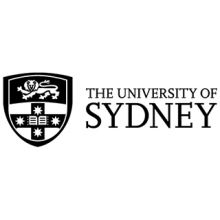A flurry of increases to Australian PhD stipends could have a “flow-on effect internationally”, as more universities seek to boost their attractiveness to research students.
UNSW Sydney deputy vice-chancellor Nick Fisk said that as competition for doctoral candidates heated up, living allowances would become an increasingly important factor in institutional recruitment pitches.
Professor Fisk said many PhD students chose to study at the institutions where their preferred supervisors worked. “But there are some broad fields where that is not so important,” he added. “It is a competitive world [for] bright students who can get five, six, seven thousand dollars more at one university than the other.”
Many domestic and some international PhD students receive tax-free stipends from Australian universities, funded through the federal government’s Research Training Programme (RTP). While the payments’ annual value can range between A$28,854 and A$45,076 (£15,841 to £24,746), universities have traditionally adopted the lower threshold to maximise doctoral enrolments.
That began changing in 2020, when the University of Sydney increased stipends for many incoming students to A$35,000 – a figure set to reach A$37,207 in 2023. By June 2022, 11 universities were paying stipends above the minimum rate, with five offering over A$30,000.
The trend has accelerated since then, with the University of Melbourne setting its stipends at A$34,400 in 2023, up from A$32,400 in 2022. In September, the Australian National University announced it was increasing its minimum stipend from A$28,854 to A$34,000.
“[We] felt strongly that it was no longer ethical to stick to the underlying government stipend amount given the cost-of-living pressures on our PhD students,” vice-chancellor Brian Schmidt told staff. “As a nation, we want the best and brightest students to undertake research.”
In October, the University of Western Australia told higher degree research (HDR) students that their stipends would rise to A$35,000 in 2023. In November, the University of Queensland flagged an increase to A$32,192.
In early December, when UNSW promised a A$35,000 stipend for all HDR scholarship holders, other institutions rapidly followed suit. Within two weeks Griffith, Tasmania, Monash, Murdoch, Adelaide, Flinders and Queensland University of Technology had all unveiled stipend increases to between A$31,500 and A$33,000.
UNSW plans to further raise its 2024 stipends to A$37,684, matching the living wage – the equivalent of 35 hours’ work at the minimum wage with an adjustment to reflect the allowance’s tax-free status. “We think it is morally the right thing to do,” Professor Fisk said.
He continued: “It’s a moral issue around fair wages; it’s an equity issue; it’s also a student satisfaction issue. Doing a PhD is a major commitment. It’s not something [where] you want to be worrying about surviving [and] how much you’ve got to eat. We’ve got runaway inflation hitting things like rent and food, particularly in [Sydney’s] eastern suburbs, making the cost of living a big deal.”
The issue is also a “big deal” for research productivity, Professor Fisk said, with around 55 per cent of UNSW’s journal articles co-authored by PhD students. “And we have considerable difficulties recruiting domestic students, particularly in some fields with huge employability,” he added.
“It’s a seller’s market rather than a buyer’s market at the moment, if you’re looking for a job and you’ve got technical skills. We have to make it not so much attractive as liveable.”
POSTSCRIPT:
Print headline: Australian PhD stipend lift to offset living costs sparks chain reaction
Register to continue
Why register?
- Registration is free and only takes a moment
- Once registered, you can read 3 articles a month
- Sign up for our newsletter
Subscribe
Or subscribe for unlimited access to:
- Unlimited access to news, views, insights & reviews
- Digital editions
- Digital access to THE’s university and college rankings analysis
Already registered or a current subscriber? Login












